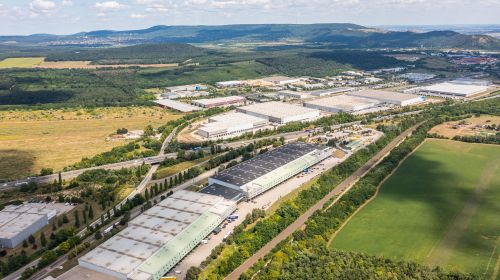Brighter prospects for CEE manufacturing
Warehouse & industrial
The automotive industry appears to have been one of the key drivers of this growth, with LG Chem locating a EUR 300 mln factory in Biskupice Podgórne near Wrocław, Daimler setting its engine factory in Jaworzno (also near Wrocław), and Toyota deciding to build an automatic gearbox factory in Wałbrzych. In October last year, Volkswagen also opened an EUR 800 mln delivery truck factory. “Over the last few years we have witnessed major automotive parts suppliers increase their volumes, footprints and capacities, and also relocate production functions from Western Europe to Poland. The latter has also brought with it new technological advancements and innovations, a trend we expect to continue in the coming years,” says Tom Listowski, a partner and head of the industrial and logistics agency at Cushman and Wakefield in Poland and the CEE region. As he points out, the investment coming from original equipment manufacturers is leading to a heavy influx of other automotive parts manufacturers that supply these car-makers. And this obviously also has an effect on the country’s logistics scene.
According to Colliers International, 2016 also saw some important lease deals involving production companies in Poland’s logistics market. These included automotive shafts producer IFA Rotorion leasing 34,000 sqm in Panattoni Park Ujazd, Danish manufacturer Sauer Danfoss leasing app. 21,000 sqm in Hillwood Wrocław 1, Ideal Automotive leasing the 19,600 sqm BTS warehouse in Zielona Góra, Thule leasing 13,300 sqm in Piła, and Aluwind leasing app. 11,000 sqm in Panattoni Park Wrocław IV.
CEE in the world of rising labour costs
An interesting report by Colliers International entitled ‘Global Manufacturing Shifts: An EMEA Perspective. Production in the Post-BRICs Era’ details expected changes to the map of global manufacturing as a consequence of growing labour costs. For CEE countries the key driver is still the continuing eastward shift of manufacturing and supply chains from higher-cost countries in Western Europe towards lower-cost countries across the CEE region. Yet, as the days of low-cost manufacturing in China are over, the CEE region also appears to be well placed to capture returning investment from parts of Asia (read China) as it combines competitive wages with proximity to the major European Consumer markets.
It should be stated, however, that tier 1 markets such as Poland and the Czech Republic, though still attractive in terms of lower costs when compared to Western economies, are under more and more pressure due to their own rises in labour costs. “This is likely to pave the way to greater investment, particularly by cost-sensitive industries, in the “off-the-beaten-track” regions within these countries, or deeper into South-Eastern Europe and the Balkan region,” states the report. Bruno Berretta, an EMEA associate director of research and forecasting at Colliers International, stresses that we can expect substantial growth in the less mature markets in South-Eastern Europe, with Romania leading the charge. “A number of international developers, such as CTP, Panattoni and P3 have recently entered the market (while Prologis left), attracted by the country’s positive economic performance, improved business climate and low vacancy in its main logistics/industrial hubs,” he says.
At the higher end of the risk spectrum, Serbia is still without the presence of international developers, but may attract interest as it strengthens its business and economic credentials. “Generally, if we gauge the potential for stock growth by current stock per capita levels, many cities across the region still have a lot of catching up to do to get to the levels of the more mature markets. For example, Bucharest and Sofia have 0.6–0.7 sqm of modern industrial space per capita compared to 1.8–1.9 sqm per capita for Warsaw and Prague,” Bruno Beretta says.






















































